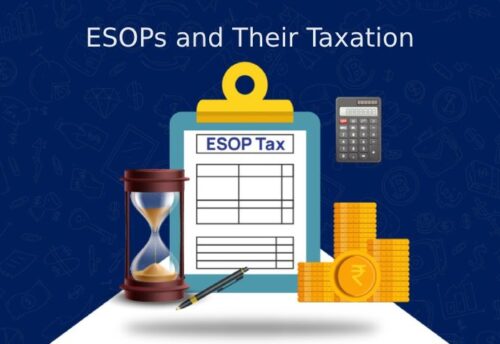
- 04/09/2024
- MyFinanceGyan
- 210 Views
- 6 Likes
- Investment, Mutual Fund
Active vs Passive Funds: Which Investment Strategy is Right for You?
When it comes to investing, one of the biggest decisions you’ll face is choosing between active and passive funds. Each approach has its unique features, and understanding them can help you make informed investment decisions. This article simplifies the concepts of active and passive investing, breaking down their key differences to help you choose the best option for your financial goals.
What is Active Investing?
Active investing involves a fund manager who actively selects and manages the assets in a portfolio. The goal is to outperform a market benchmark by carefully choosing which stocks, bonds, or other securities to buy, sell, or hold. Fund managers rely on research, analysis, and market predictions to make these decisions, aiming to maximize returns for investors. While active investing can potentially deliver higher returns, it often comes with higher fees and increased risk due to the reliance on human judgment.
What is Passive Investing?
Passive investing takes a different approach. Instead of trying to beat the market, passive funds aim to mirror the performance of a specific market index, such as the Nifty 50. These funds, including index funds and ETFs, hold the same securities in the same proportions as the index they track. Because there’s minimal involvement from the fund manager, passive funds typically have lower fees and reduced risks associated with human error. However, they generally provide returns that match the market, with little chance of outperforming it.
Key Differences Between Active and Passive Funds:
- Nature: The nature of passive funds vs active funds significantly differs in their investment approach, with passive funds tracking a market index, while active funds involve active stock-picking to outperform the market. Active funds entail hands-on involvement from fund managers, who utilize research, analysis, and market insights to make buy, sell, or hold decisions for the securities in the portfolio. In contrast, passive funds involve minimal intervention from the fund manager. These funds mirror a specific market index’s performance and invest in securities in the same proportions as the index. Consequently, passive funds focus on replicating the benchmark returns rather than trying to outperform them.
- Expense ratio: Expense ratios reflect the costs associated with managing a fund, and they vary between active and passive funds. When comparing passive funds vs active funds, the expense ratio tends to be lower for passive funds, as they require less active management and fewer transaction costs. Active funds generally have higher expense ratios due to the extensive research, analysis, and management activities performed by the fund manager. On the other hand, passive funds have lower expense ratios because the fund manager’s role is limited, and the investment strategy is relatively straightforward. Lower expense ratios can translate to higher net returns for the investor in the case of passive funds.
- Returns: In terms of returns, passive funds vs active funds can yield different results. Active funds aim to outperform their benchmark index and deliver higher returns by leveraging the fund manager’s expertise and decision-making. However, achieving this goal is not guaranteed, and active funds can sometimes underperform the market. In contrast, passive funds’ returns closely track the benchmark index, providing investors with market-like returns. While they may not generate significant alpha, passive funds offer consistent returns that mirror the index performance.
- Risk: The risk profile associated with passive funds vs active funds also varies. Active funds may expose investors to higher risks, as the fund manager’s decisions are subject to human error, and the pursuit of higher returns often involves taking on additional risk. Passive funds, on the other hand, mitigate some risks by following a predetermined index. They eliminate stock-picking and portfolio manager selection risks through rule-based investing. However, passive funds still carry market risks, as they are subject to the same fluctuations as the underlying index.
Pros and Cons of Active and Passive Investing:
Active Investing:
- Pros:
- Potential for higher returns.
- Flexibility to adapt to market changes.
- Access to expert research and insights.
- Cons:
- Higher fees and costs.
- Risk of underperformance.
- Vulnerability to human error.
Passive Investing:
- Pros:
- Lower fees and expenses.
- Consistent, market-matching returns.
- Reduced risk from human decision-making.
- Cons:
- Limited potential for outperformance.
- Susceptibility to market downturns.
- Lack of flexibility to react to market changes.
Which Should You Choose?
Your choice between active and passive funds should depend on your personal financial goals, risk tolerance, and how much time you can dedicate to managing your investments. A balanced investment strategy might include a mix of both active and passive funds, offering a blend of potential growth and stability.
- Active Funds: Ideal for investors seeking higher returns and who are comfortable with higher risks and fees.
- Passive Funds: Suitable for those looking for a cost-effective, lower-risk investment that tracks the market.
Conclusion:
Deciding between active and passive funds ultimately comes down to your individual financial situation and investment philosophy. Active investing offers the chance for higher returns and greater flexibility, while passive investing provides a more straightforward, cost-effective approach with consistent returns.
For a well-rounded portfolio, consider combining both active and passive funds. This mix can help you navigate various market conditions and achieve your long-term financial goals. Always do thorough research or consult a financial advisor to ensure your investment choices align with your financial objectives and risk tolerance.
Disclaimer: The views in this article are for educational purposes only and do not constitute financial advice or product recommendations. Always consult with a financial advisor before making investment decisions.



